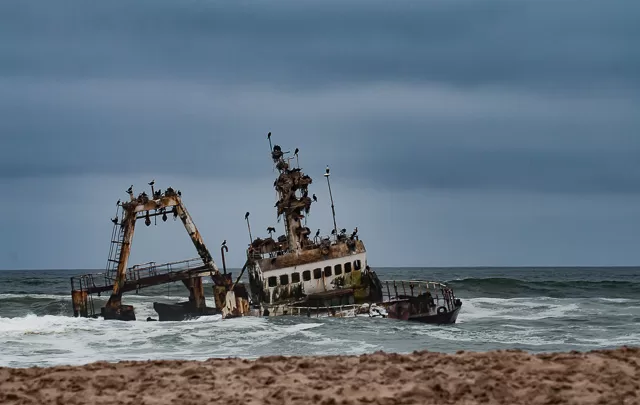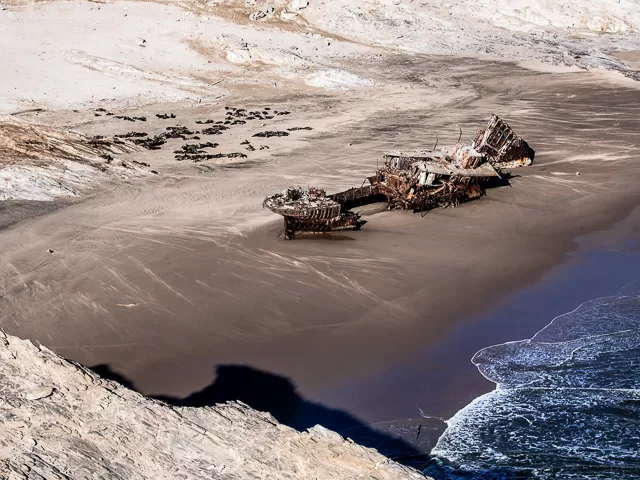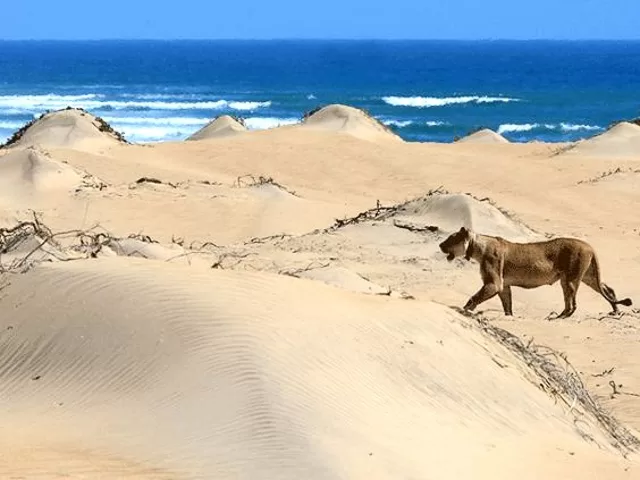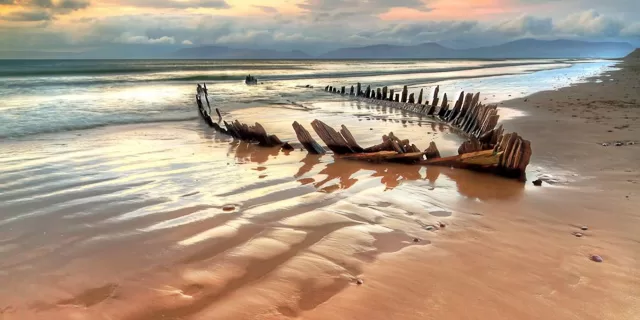About
Top Experiences
Type of Journey
Subscribe to newsletter and stay updated
Read about our travel expeditions, new destinations, new pictures, latest trip schedules
The name Skeleton Coast Namibia is derived probably, due to dozens of seals and whale skeletons scattered throughout rough terrain. Undoubtedly that’s the reason Namibia’s Bushmen call the land, “Gates of Hell”. The skeleton coast topography and climatic conditions are very peculiar. Living creatures have a hard time surviving in this hellish habitat. Yet, the ovahimba settlements resided by using whale bones for designing their huts.
The cold Benguela current generates a thick, heavy fog that hazes the coastline throughout the year. The desert winds carry less than 10 millimeters of annual showers.
Sailors who reached the coast couldn’t survive due to such stormy weather and erratic environment. Though, some animals upgraded endurance to reside at this unwelcoming land of paradise. Today you can see hidden bones, rocks, vessels of the victims, who lost the battle of survival against this mystical turf.
The Otavi, the Eduard Bohlen, Tong Taw, and the Dunedin Star are some recognized shipwrecks on the shore of Namibia. The bleak shoreline of the Skeleton Coast Beach Namibia looks wonderful with an alluring deep-sea that fringes over the surface slowly merging with dunes. It’s a tale of two different surfaces embracing each other magically.
OVERVIEW
Location:East Namibia
Nearest International Airport:Windhoek
How to reach: By road or flight from Windhoek
Famous for: Long beach with fossils
Best time to visit: Jan to Dec
WHAT TO SEE
Animals: Gemsbok (oryx), springbok, jackal, ostrich and brown hyena, lion, black rhino, giraffe, and desert-adapted elephant
Plants: Nara melons, welwitschias, lichen, and pencil (ink) bush
The forbidding nature of Skeleton Coast Namibia has one of the most immaculate shorelines in the world. It is located at the Angolan border in northwest Namibia, taking in 500 kilometers of shoreline covering 2 million hectares of dunes and sand plains. The southern zone runs between the Ugab and Hoanib Rivers, the northern zone passes from Hoanib and Kunene.
Self-reliant travelers can apply for permits for day trips but only to the southern side, the northern side is very much known as the Skeleton Coast Wilderness and is inaccessible due to rough environmental conditions. Only 800 visitors per year are allowed to venture into the restricted zone to preserve the delicate habitat.

Shipwreck Lodge
The exclusive Shipwreck Lodge Namibia was opened in June 2018 for its visitors.
The lodge is a distinct architectural structure that embraces the ambiance of the Atlantic Ocean.
Visitors/Guests are welcomed to 10 shipwreck-styled cottages for giving them an enthralling stay experience. The cottages are designed beautifully encircling the dunes around the lodge with a dining area as the center point.

Activities:
Sail in the Hoarusib river to spot desert-adapted elephant
Visit/ Trip to shipwreck point
Sundowners and peaceful walk around Namibia coastline
Game outings to the Skeleton Coast National Park
Fishing:
4×4 tailored excursions

Music of Oasis dunes:
The place is home to the Himba tribe as they are the last of Namibia’s wandering pastoralists. People residing here grow nothing and only consume raw meat. The trip is laid on for tourists, but when it’s over we head to the home of one of the guides on the tour. The cold Benguela current creates a thick, heavy fog that clouds the Skeleton Bay Namibia for the whole year. Activities involve the exploration of the surrounding areas with spectacular scenery, unexpected oases with enormous dunes breezing.
Hoanib Valley Camp: Hoanib Namibia has an exclusive and luxury tented camp in north-western Namibia offering six elegant tents. As a joint venture between the local communities and the Giraffe Conservation Foundation, the camp is situated in the Hoanib river, one of Namibia’s most remote and wild environments. Hoanib Valley camp offers tourists an interesting game of tracking down deserted animals like the elephant, lion, rhino, and giraffe.
Nature explorers are attracted to Namibia’s Hoanib river due to it’s the wild and remote environment.

Signs of Life:
The Skeleton Coast Park lies to the east of Etosha National Park. Several wildlife species rely upon the west drifting rivers (‘linear oases’) for their survival. While rivers rarely seep, the underground water and springs in the river beds assist in vegetation, act as the water source for the riparian forest, give water and food to the nearby settlements. The nearby region also acts as a breeding ground for animals. Over 100 lichen species can be observed playing an essential role in the ecology. The lichen grows alongside west-facing mountain hills and is soft and leathery when touched. These lichens bloom around coastal fog inland with changing color.